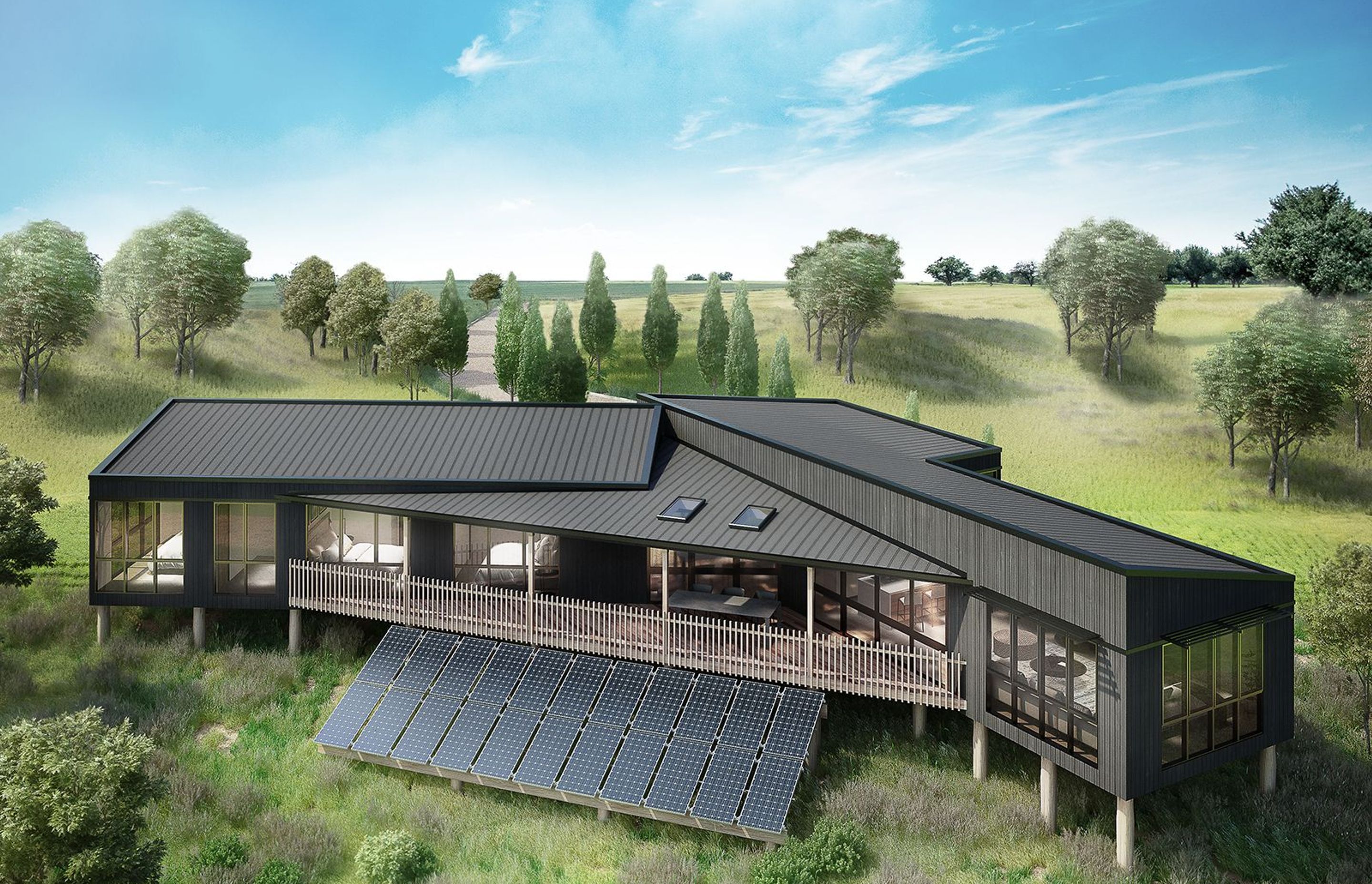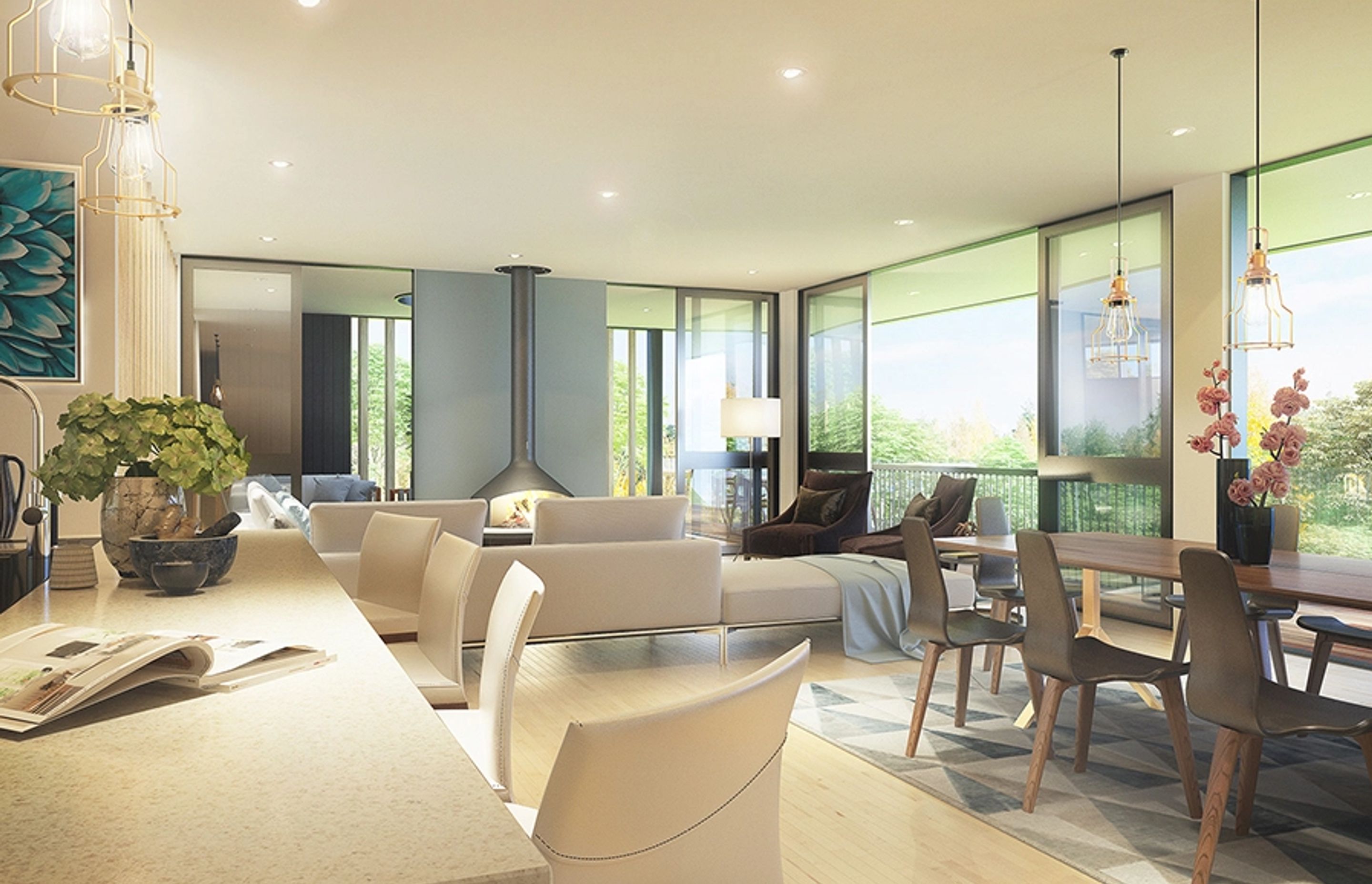How to Design An Eco-Friendly Home

A patch of dirt offers an exciting blank canvas for would-be homeowners to build on – but our right to occupy that land should be tempered by the knowledge that we are just temporary caretakers of our particular square of Earth.
The building industry is not a natural front-runner in the sustainability stakes. Extracting raw materials from the ground and then processing them into products that can be used to construct a home uses valuable energy and reserves. Plus it increases our carbon footprint. Viewed in this way, it becomes even more important to build sustainably and with an eco-friendly attitude.
But how do you design a dwelling in a way that is mindful of these resources, using methods that lessen our impact on the planet? Here are some ideas:

Make it modular: By designing spaces in increments of standard material sizes, there will be fewer offcuts and a lot less waste to be disposed of from the building site. That means our landfills will be emptier while our pockets are less depleted. It's more financially sustainable to design to a modular grid because homeowners are not outlaying funds for the building materials and then paying to dispose of the remnants, too.
Prefabrication saves the planet: In New Zealand, building costs are more expensive because, in the main, homeowners insist on custom-made components. Using a building system that can be personalised but also contains some prefabricated parts means these costs are more likely to be kept under control. Standardised elements such as posts and beams that form a structural skeleton, and windows and doors that arrive on site pre-made have a time-saving benefit too. All round it is a lot less wasteful way to design and build.
Much less is more: The trend over the past few decades has been for bigger and bigger homes, but a larger footprint doesn't necessarily mean a better-quality environment. When building, ask yourself: how much space do I actually need? Smaller homes can be efficiently planned to feel more spacious. Instead of investing money into extra floor space, you could put the funds into higher-spec fittings. Smaller homes are naturally easier to keep warm. And they leave some room on the section for greenery and planting – an important way to mitigate the heating effect of all those hard surfaces in high-density urban areas.
Take the passive pathway: Make sure your home is oriented for maximum solar gain, with extensive double glazing that faces north (in the southern hemisphere). The eaves should be angled to capture as much low winter sun as possible yet provide shade from the searing summer sun. Also make sure there is plenty of passive ventilation included in the design (louvre windows and trickle vents, for instance) so the air circulates and keeps the home dry.
Look local: By choosing and using materials that are sourced nearby (and don't need to be trucked in for miles or flown in from another country), the building will leave a smaller carbon footprint.
Materials that matter: Weigh up your options carefully. Concrete is an energy-intensive product to manufacture, but it also acts as thermal mass which retains heat from the sun and then slowly releases into a room, keeping the temperature more even throughout the day. Timber that is sourced from a local supplier and is sustainably grown is an eco-friendly option since trees are carbon sinks – they absorb CO2 from the atmosphere. Opt for paints and stains that are low-VOC (volatile organic compounds).
Running on green: No eco-friendly house would be complete without those systems that offer greater energy efficiency and self-sufficiency. Consider harnessing free energy from the sun by installing solar hot water and solar (PV) power. At the design stage, it is also a more sustainable idea to add a tank for rainwater collection off the roof and install a system for grey-water recycling.
Box™ Design & Build is a architect home design company based in Auckland, running projects throughout New Zealand.
This article originally appeared on EcoBob.

